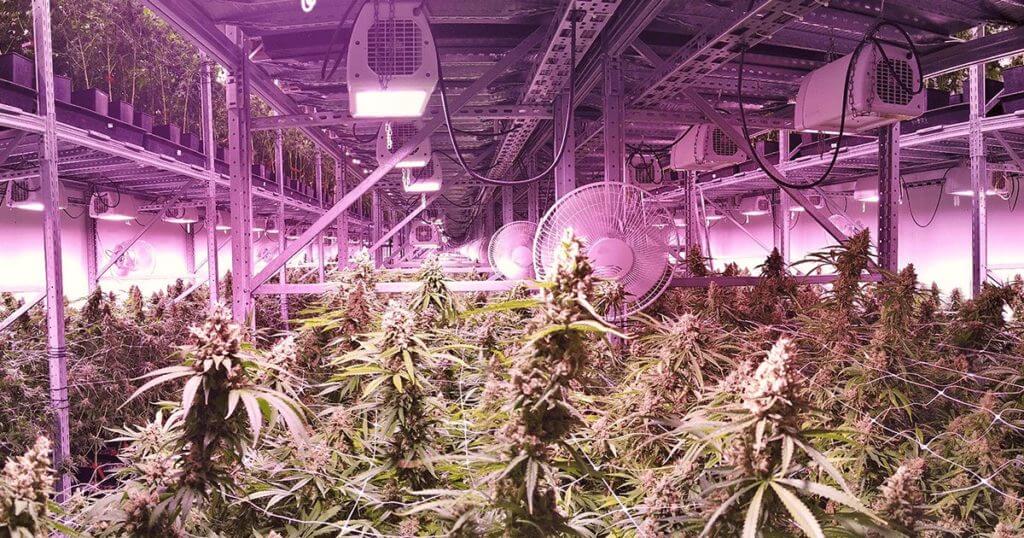Ozone is a strong oxidizing agent – it has a long and decorated list of uses like water treatment or as a cleaning agent for wine and beer vats. In the cannabis industry, it is used to minimize contamination of cannabis crops during the cultivation stage. Ozone is used to sterilize an entire grow room in minutes by killing mold and pathogens while sterilizing equipment, which seems like a win-win for cultivators and consumers alike. However, ozone is known to be dangerous to humans, and the effects of ozone in cannabis cultivation are under-studied, especially when compared to its usage.
The Science Behind Ozone Cultivation
Ozone for agriculture is usually produced by machines and can be used as a gas to treat crops like cannabis. It removes all manners of free-floating organic materials due to the fact that the third oxygen atom exits the molecule and connects with new substances, changing their chemical makeup. Ozone is able to be dissolved in water and used to disinfect surfaces in rooms, equipment, and even plants. When ozone is added to water, it raises the ORP (oxidation-reduction potential) to the point that any water that comes into contact with microorganisms on the surface being treated will kill them.
Kyle Baker of EcoBuds cautioned, however, that ozone is extremely reactive, and that when near monoterpenes (or volatile organic hydrocarbons), which cannabis produces in large quantities, ozone can produce formaldehyde, aldehyde, and other ultra-fine particles that are harmful to humans.
Understanding its chemistry, according to Baker, is vital for proper ozone operations. “It’s a known carcinogen and a known mutagen. If you’re in the medical field, they restrict the amount of ozone that can be used or generated by devices because it’s a danger to patients. And in most other industries, ozone isn’t really used because of those same factors. So, you have to look at its limitations and what you’re applying it to,” he says.
Baker feels there’s a good chance that ozone is being used in the cannabis sector in a dangerous way, or with methods that aren’t permitted in other industries. There is likely a way for ozone to be used properly in the cannabis sector, but further research is needed according to Baker. Most laboratories, he claims, aren’t checking for formaldehyde or aldehyde in cannabis “and it could have some extremely deleterious effects not only on employees but also consumers.” Since there are currently no manufacturing standards for cannabis, cultivators can do what they want, even if it is dangerous.
Not only can ozone be bad for humans, but it damages plants as well. High quantities can prevent plants from producing chlorophyll, which is necessary for photosynthesis. The result is the death of healthy cells, which will inevitably lead to the death of the plant.
Current Ozone Practices
Ozone sanitation is not a new practice: in fact, it is widely used by food growers and horticulturalists across the country and has been for decades. Various studies have been conducted on the use of ozone in food processing applications, and many ozone systems are currently in use for these purposes. Horticulture and subsequent processing of plants can employ the same technologies and procedures as the food processing sector.
Foods sprayed with ozone disinfectant can experience a longer shelf life, are protected against infection from micro-organisms, and ozone can be used as an eco-friendly pesticide. Even formaldehyde, used in the fishing industry, can be used to safely chemically alter the composition of our foods.
However, the regulatory bodies and codes that inform the food industry don’t exist with cannabis.
The Potential Dangers Of Ozone
Not only is ozone dangerous for humans and plants, but it’s quite difficult to manage ozone levels being produced by your generator. The recommended concentrations range from .1 to .5 ppm – this ensures operator safety and crop health. However, the minimum necessary concentration to kill bacteria is 25 ppm, which is dangerous for both humans and plants. Managing ozone levels requires advanced equipment and education, something that Baker believes the cannabis industry is lacking.
Ozone may be an effective anti-bacterial treatment, but the risks could greatly outweigh the benefits. Cannabis companies need to be doing more research since the government won’t step in: the safety of employees and consumers is in their hands, and right now, we don’t see cultivators taking the correct precautions. Hopefully, they will be motivated to change soon.
Enjoyed that first hit? Come chill with us every week at the Friday Sesh for a freshly packed bowl of the week’s best cannabis news!

















